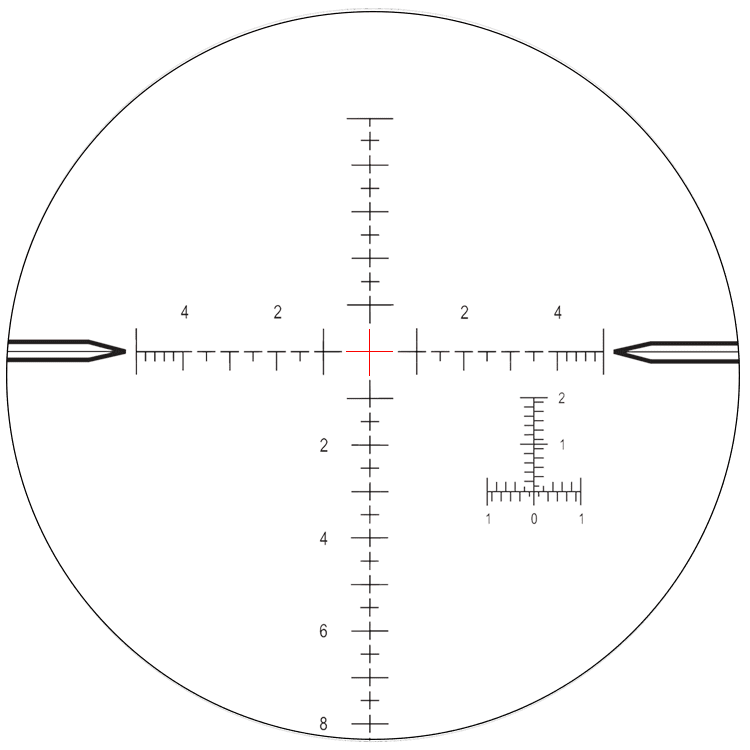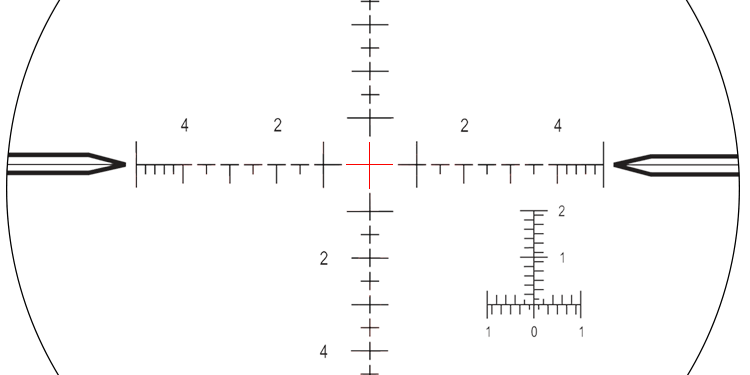
When it comes to long range shooting, there are two major systems that you will hear about in regards to scope reticles: Milliradians (MIL) and Minutes-of-Angle (MOA). Whichever one you decide to use, it will be easier if your reticle matches your turrets. They are both units of angular measurements and used quite a bit in shooting, especially long range shooting. Here we will breakdown the difference between the two systems.
Minutes-of-Angle
MOA is one 60th of a degree. If you consider full rotation of a circle at 360 degree, every degree divides into 60 minutes of angle with every minute dividing in 60 seconds of angle. A MOA corresponds to 1.047in at 100yds and 29.1mm at 100m. Values are often rounded to 1” at 100yds and 30mm at 100m, but for shooting long distances, rounding can generate a small error.
Milliradians
A MIL is finer in measurement than degrees, so it is a very precise measurement. In shooting, we use mils to find the distance to a target to adjust shot placement. It can also be used to adjust for winds and movement of a target. At 100m, 1 MIL is equal to 100mm, and 3.6in at 100yds.
The linear measurement increases or decreases proportionally with distance. At 100m, 1 mil corresponds to 100mm. At 500m, which is five times the distance of 100m, the value of 1 mil is 500mm. The same applies to measurements in MOA.
Long Range Adjustments
The most common adjustment are ¼ MOA or 1/10 MIL. Consider one click at 1,000 yards: If 1 MIL is 36”, 1/10 MIL is 3.6”. If 1 MOA is 10.475”, ¼ MOA is 2.6”. It equates to just 0.1” difference in adjustments made at 100 yards or 1” at 1,000 yards. Most long range shooters will agree that both are about equal as far as being able to dial in on the spot you want to hit, and you will find it is evident in adjustments you can make with most scopes as well.
Which Do I Choose?
They are both equally effective; choosing one or the other will come down to what you are most comfortable with. Some common key points include:
- 1/4 MOA adjustments are slightly more precise than 1/10 MIL.
- MIL values are slightly easier to communicate.
- If you think in yards/inches the math for range estimation is easier with MOA. If you think in meters/cm the math is easier with MIL.
- When your shooting partners are using one system, there can be some advantage to having the same system.
- Around 90% of the PRS competitors use MIL.
- There are more product options (with ranging reticles) in MIL.
Whatever direction you go with, even the best shooters won’t be able to reach consistent long range accuracy without a quality firearm. Find your fit, and build your own custom rifle with our experts today!
Original Source: https://sterlingprecision.net/precision-accuracy/understanding-mil-versus-moa/





